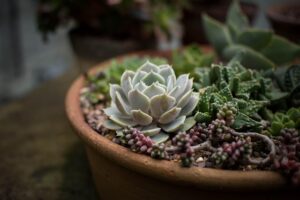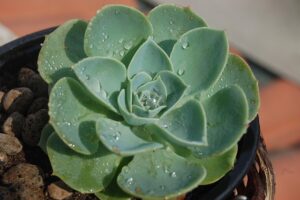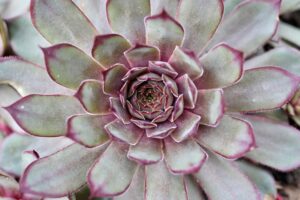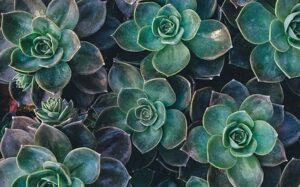Have you ever wondered why some plants are believed to bring prosperity and harmony at home? If you landed here, chances are you are curious about the Laxmi Kamal plant or the Echeverias , and how you can grow it in your garden.
This blog will take you through its history, care tips, uses, and surprising facts. Let’s explore together Laxmi Kamal Plant Benefits.
Introduction
The Laxmi Kamal plant (Echeveria ‘Laxmi Kamal’) is a beautiful succulent admired for its rosette leaves and cultural importance. Known as a symbol of wealth and good fortune, it is not only a decorative plant but also a plant with benefits for your home and health.

Here’s a quick table with key highlights of this plant before we dive deeper:
| Feature | Description |
| Botanical Name | Echeveria ‘Laxmi Kamal’ |
| Common Name | Laxmi Kamal Plant |
| Plant Type | Succulent |
| Symbolism | Prosperity, harmony, and good luck |
| Origin | Mexico, introduced to India with cultural significance |
| Growth Habit | Rosette-shaped, fleshy leaves |
| Sunlight | Bright indirect light or partial sunlight |
| Watering Needs | Low, prefers dry conditions |
| Temperature | 15°C to 30°C |
| Lifespan | Long-living with proper care |
History and Origin
The Laxmi Kamal plant traces its roots to Mexico, where the succulent family Echeveria naturally thrives.
Its rosette-shaped leaves resemble a lotus, which inspired the Indian name “Laxmi Kamal” — combining the goddess of wealth, Laxmi, and the sacred lotus, Kamal.
In Indian culture, the plant became a household favorite for its symbolic link to prosperity and harmony. Many believe it brings balance and positive energy.
Over time, it spread to gardens and homes across India, both as a decorative and spiritual plant.

Growing Conditions
Like most succulents, the Laxmi Kamal is low-maintenance and forgiving. Here’s how to create the perfect conditions:
- Soil: Use sandy, well-draining soil or a cactus mix. Avoid heavy, clayey soil.use cinder or vermiculite.
- Water: Water once the topsoil dries completely. Overwatering causes root rot.
- Sunlight: Needs bright but indirect light. Direct scorching sun may burn the leaves.
- Temperature: Ideal range is 15°C to 30°C. It cannot tolerate frost.
- Humidity: Prefers low humidity. Keep away from overly damp areas.
Varieties of Laxmi Kamal
Though Laxmi Kamal refers to a specific rosette form, it belongs to the Echeveria genus, which includes many varieties. Some popular ones include:
- Echeveria elegans – Known as the “Mexican snowball,” with pale green leaves.
- Echeveria runyonii – Has spoon-shaped leaves in blue-gray tones.
- Echeveria agavoides – Sharp, pointed leaves resembling an agave.
- Echeveria lilacina – Called the “ghost echeveria,” with silver-gray leaves.
- Laxmi Kamal (main variety) – Rounded, compact rosettes with spiritual significance.

Each type offers unique leaf shapes and colors but requires similar care.
Care Tips
If you are new to succulents, the Laxmi Kamal plant is a great starting point. Follow these steps:
- Pruning: Remove dry or damaged leaves to keep the rosette healthy.
- Repotting: Repot once every 2 years or when the plant outgrows the pot.
- Fertilizing: Use diluted succulent fertilizer once in 2 months during active growth.
- Propagation: Easily propagated through leaf cuttings or offsets (baby plants around the base).
- Pots: Use clay or terracotta pots with drainage holes.
These small efforts go a long way in keeping your plant thriving.
Common Problems and Solutions
Even though it is hardy, the plant may face some issues:
- Overwatering: Leaves turn mushy and roots rot.
- Solution: Water only when soil is dry.
- Pests: Mealybugs and aphids can attack.
- Solution: Use neem oil spray.
- Leaf Burn: Caused by harsh direct sunlight.
- Solution: Shift to bright indirect light.
- Drooping Leaves: Indicates lack of light.
- Solution: Place near a sunny window.
- Stunted Growth: Caused by poor soil.
- Solution: Use nutrient-rich succulent mix.

Laxmi Kamal Plant benefits
Ornamental Benefit
The Laxmi Kamal plant’s symmetrical rosette leaves create a striking ornamental display, perfect for gardens, balconies, or tabletops. Its unique beauty enhances indoor decor, adding charm effortlessly.
Cultural and Spiritual Benefit
In Indian tradition, the Laxmi Kamal plant is linked with Goddess Laxmi, symbolizing wealth, luck, and harmony. Many keep it during festivals for prosperity and spiritual energy.
Medicinal Benefit
Some communities use Laxmi Kamal’s fleshy leaves for soothing skin irritations and minor burns. Its cooling nature provides natural relief, though scientific validation is still very limited.
Environmental Benefit
As a succulent, Laxmi Kamal improves indoor air quality by absorbing toxins and releasing oxygen. Its stress-reducing greenery brings peace, calmness, and healthier surroundings naturally indoors.
Vastu and Feng Shui Benefit
According to Vastu and Feng Shui, placing the Laxmi Kamal plant at the home entrance invites wealth, harmony, and positive vibes. It’s considered a natural prosperity magnet.
Interesting Facts
Here are five surprising things about the Laxmi Kamal plant:
- It stores water in its thick leaves for weeks, making it drought-tolerant.
- It blooms with pink or red flowers under the right conditions.
- The plant is often gifted during Diwali as a symbol of wealth.
- It can live for years with minimal care.
- Some believe it brings peace to strained relationships.

FAQsHow often should I water the Laxmi Kamal plant? Can I grow this plant indoors? Does the plant really bring prosperity? Is it safe for pets? How do I propagate Laxmi Kamal successfully? |
Conclusion
The Laxmi Kamal plant is more than just a succulent. It blends beauty, symbolism, and practical benefits into one. With minimal care, it will reward you with its charm for years. If you are looking for a plant that uplifts your space and possibly your fortune, this is a perfect choice.
Thanks for reading. Keep growing, keep exploring, and don’t forget to return here at gardeningbud.com for more plants, tips and gardening wisdom.
